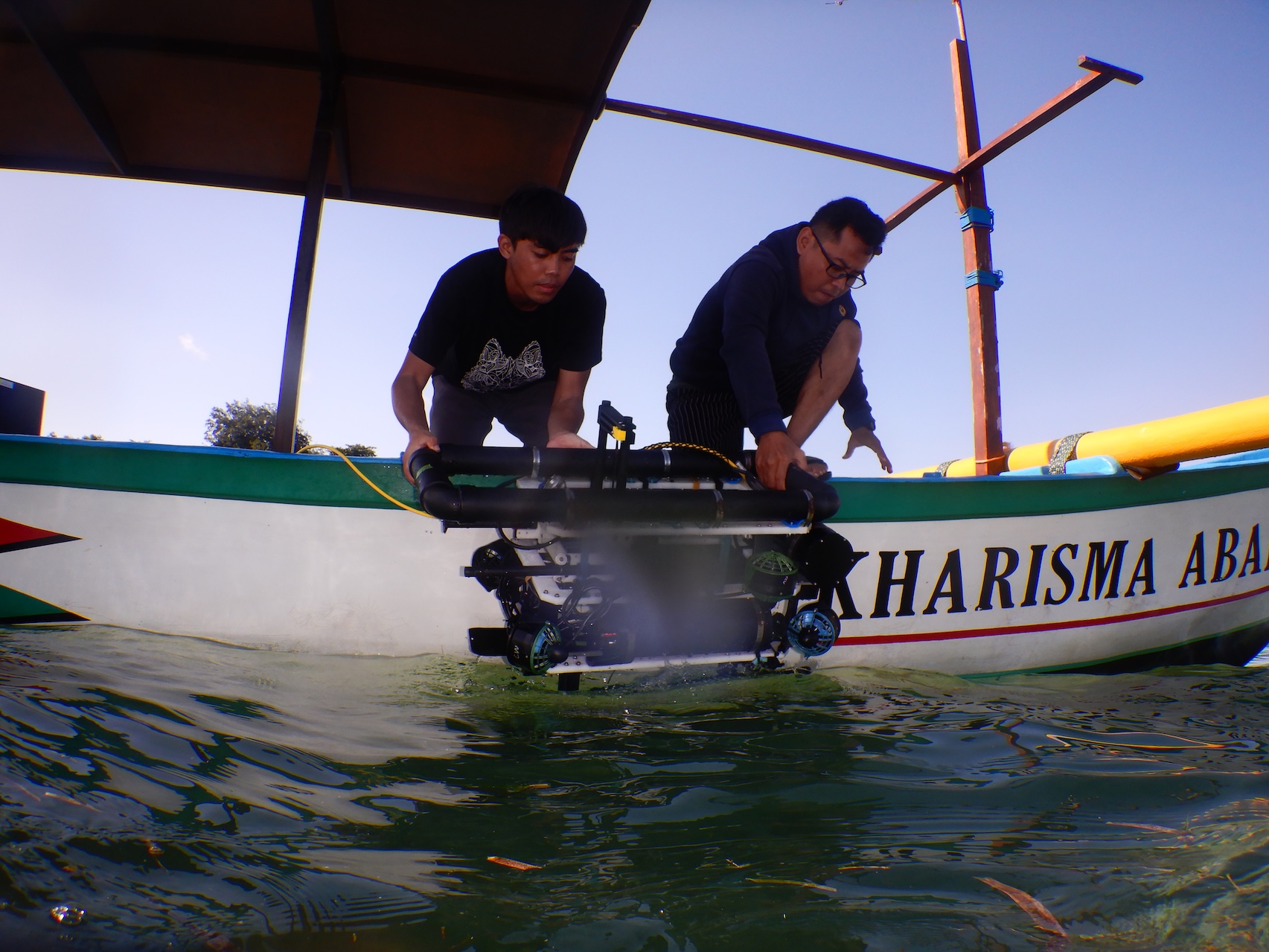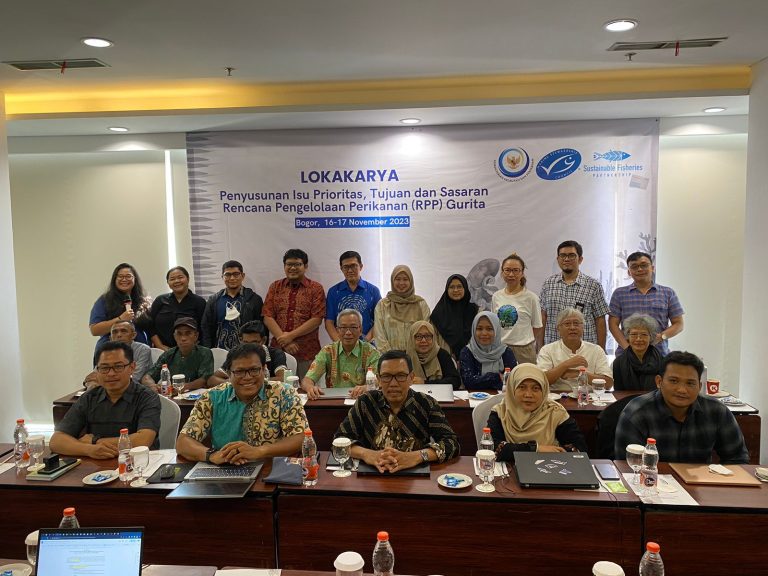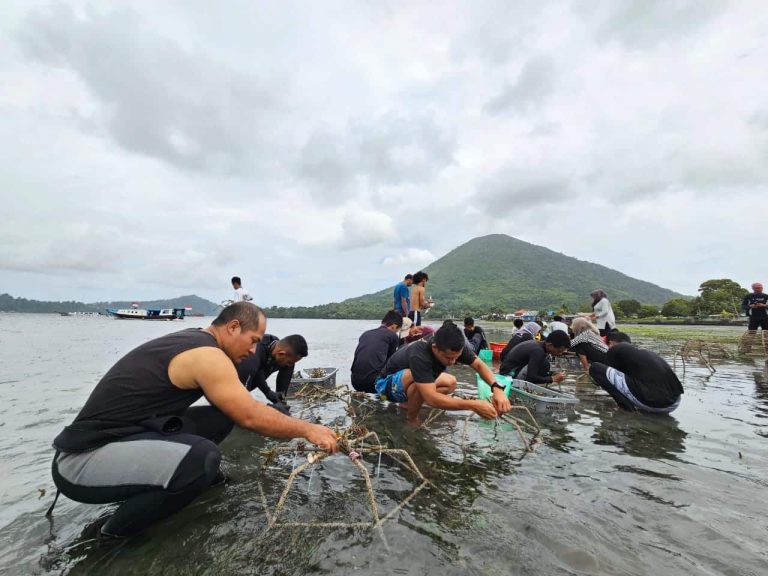A new chapter in marine conservation is unfolding in Bali as LINI, a leading Indonesian conservation foundation, and Reefgen, a robotics company specializing in marine restoration, join forces to explore the use of robotic automation for seagrass restoration. This ambitious partnership, which began in 2024, is focused on developing and refining machines and machine learning technologies with the long-term goal of using robots to assist in large-scale seagrass planting.
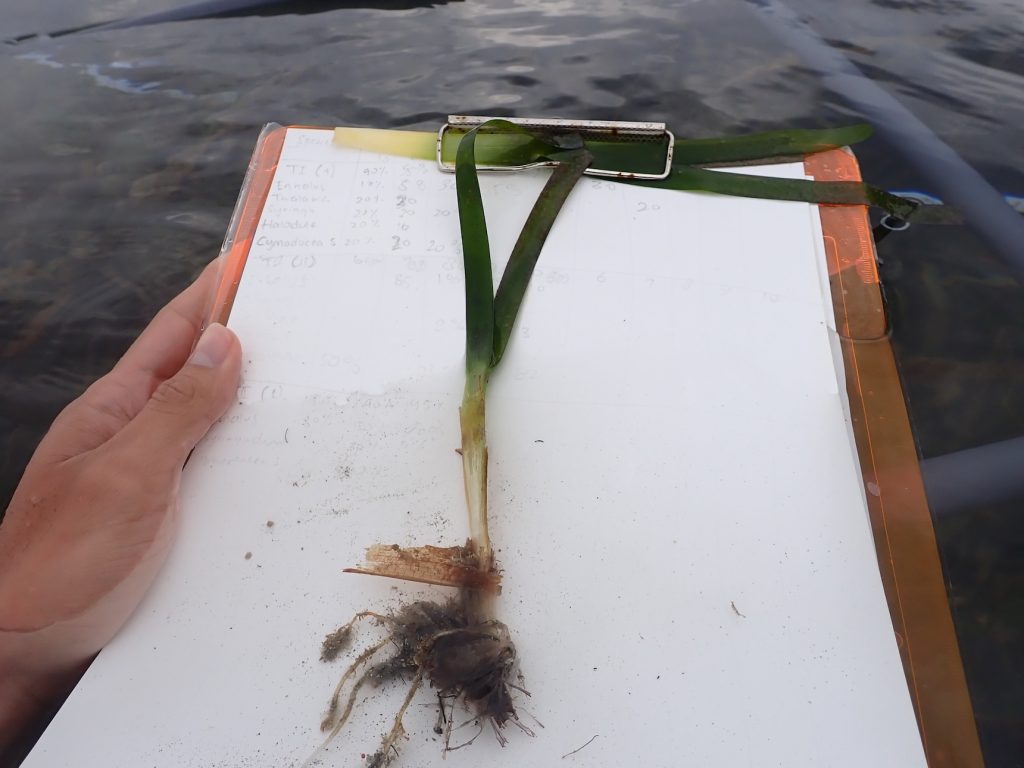
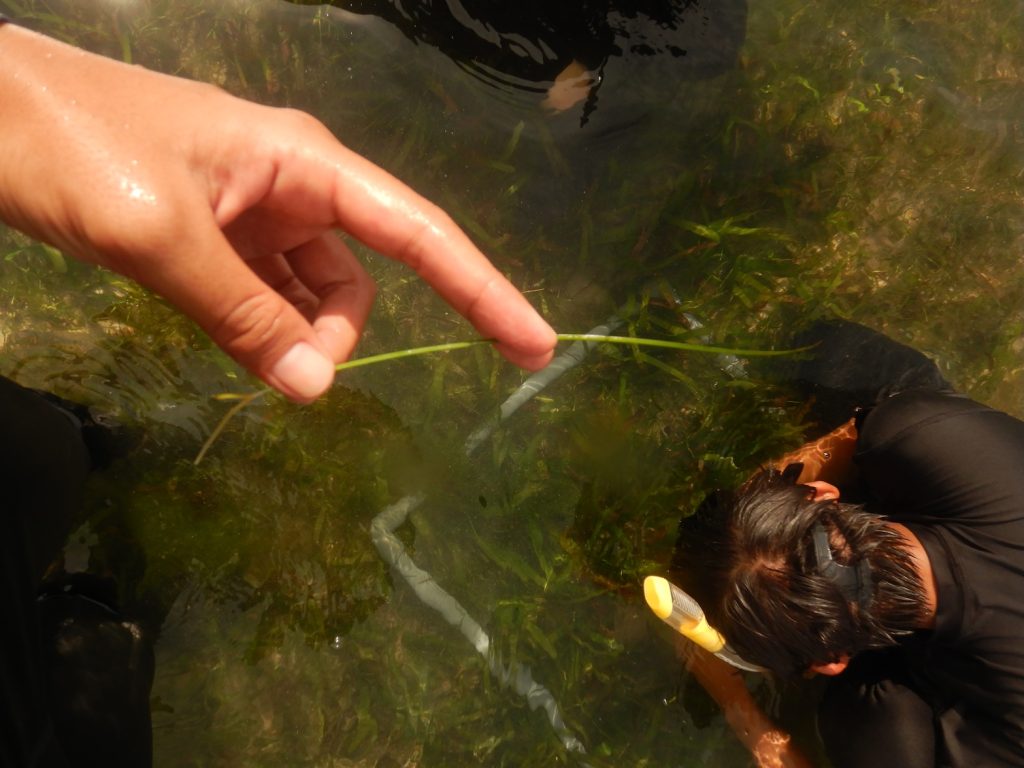
Seagrass meadows are a vital part of marine ecosystems, acting as natural nurseries for fish, stabilizing coastlines, and playing a critical role in carbon sequestration. However, these crucial habitats are under threat from a variety of pressures, including coastal development and climate change.
To lay the groundwork for an automated system, the LINI team has been conducting in-depth study on local seagrass species and identifying suitable restoration sites across Bali, as well as ex situ planting trials in our center – LINI Aquaculture and Training Center.
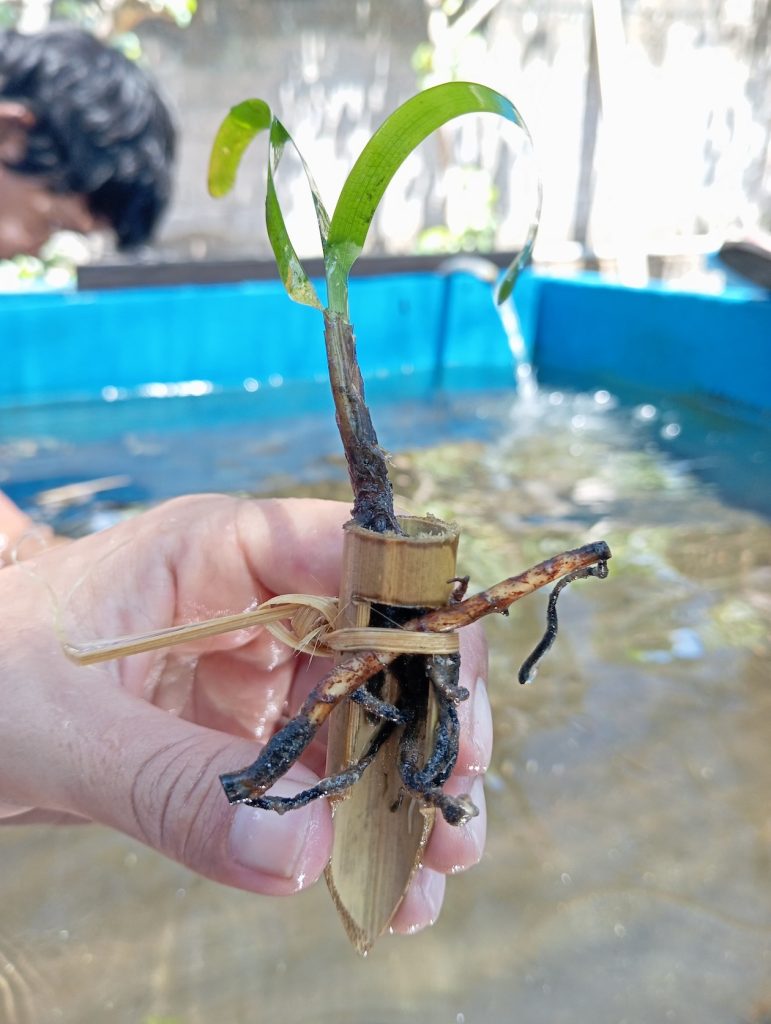
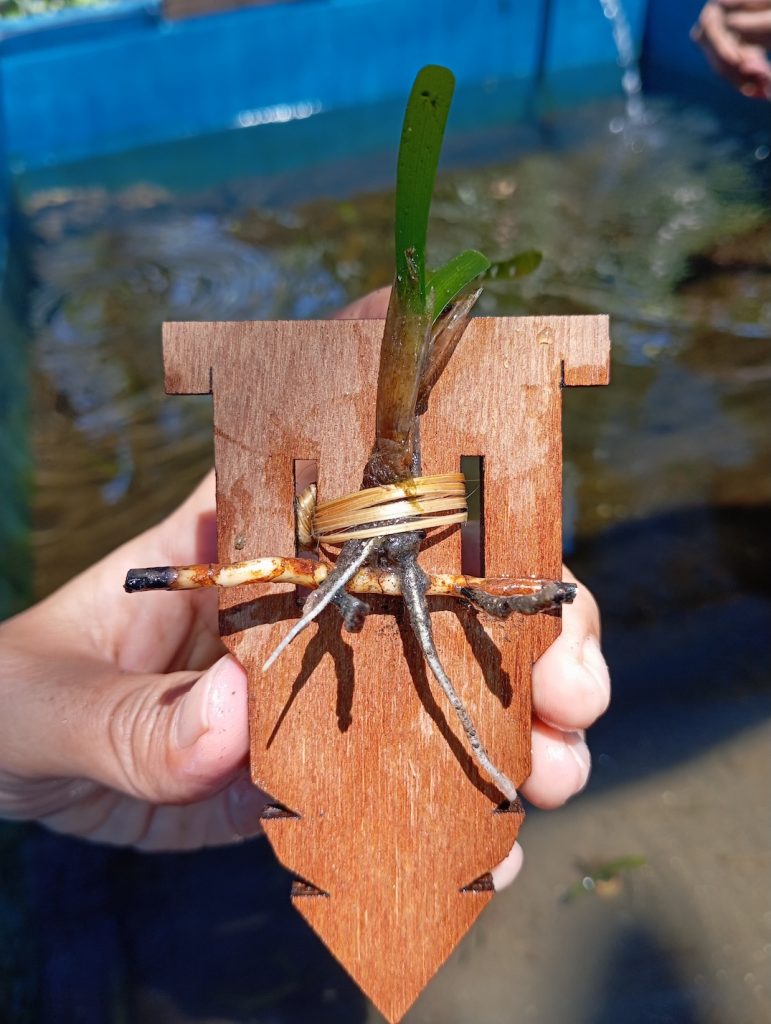
In 2025, we started a series of in situ planting trials, which began in June 2025. The trials are designed to test the viability of various materials and methods before deploying an automated system.
The first trial was conducted in Pemuteran, North Bali, in collaboration with Karang Diver. The team planted Thalassia hemprichii, a dominant local species, using biodegradable bamboo stakes at depths of 5-6 meters and 7-8 meters. The choice of bamboo was strategic, selected for its sturdiness and eco-friendly nature. Plots were carefully monitored daily for the first week and weekly thereafter. Unfortunately, the trial faced a significant challenge from large waves that struck the area during the final week, resulting in the loss of most bamboo stakes.
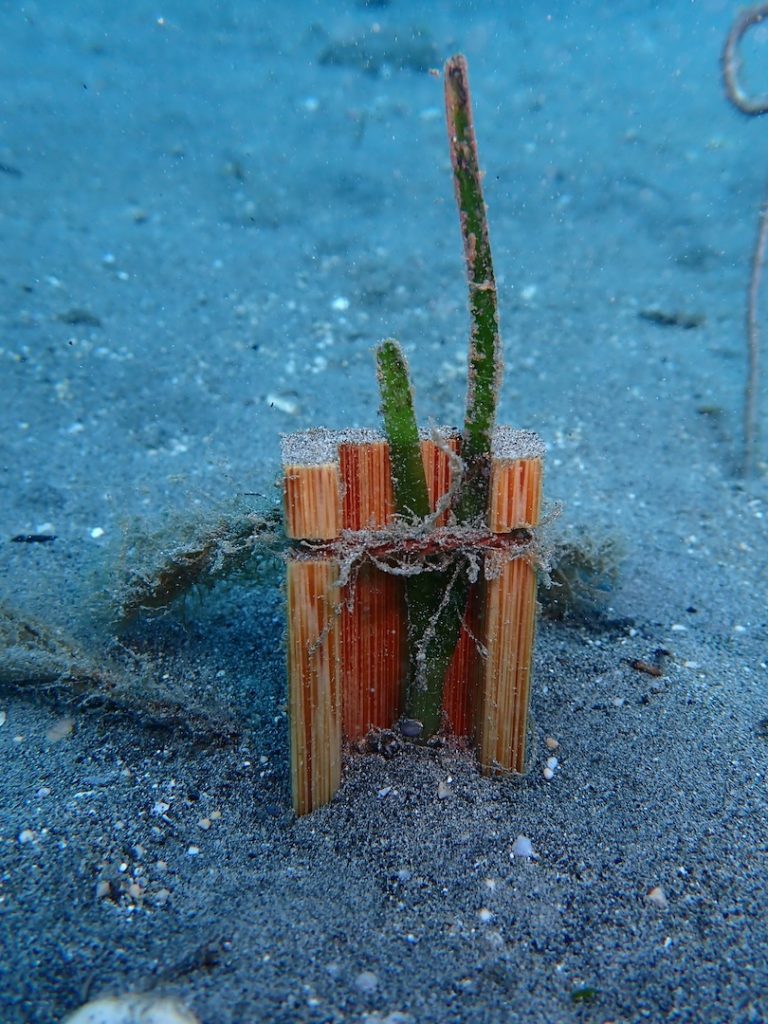
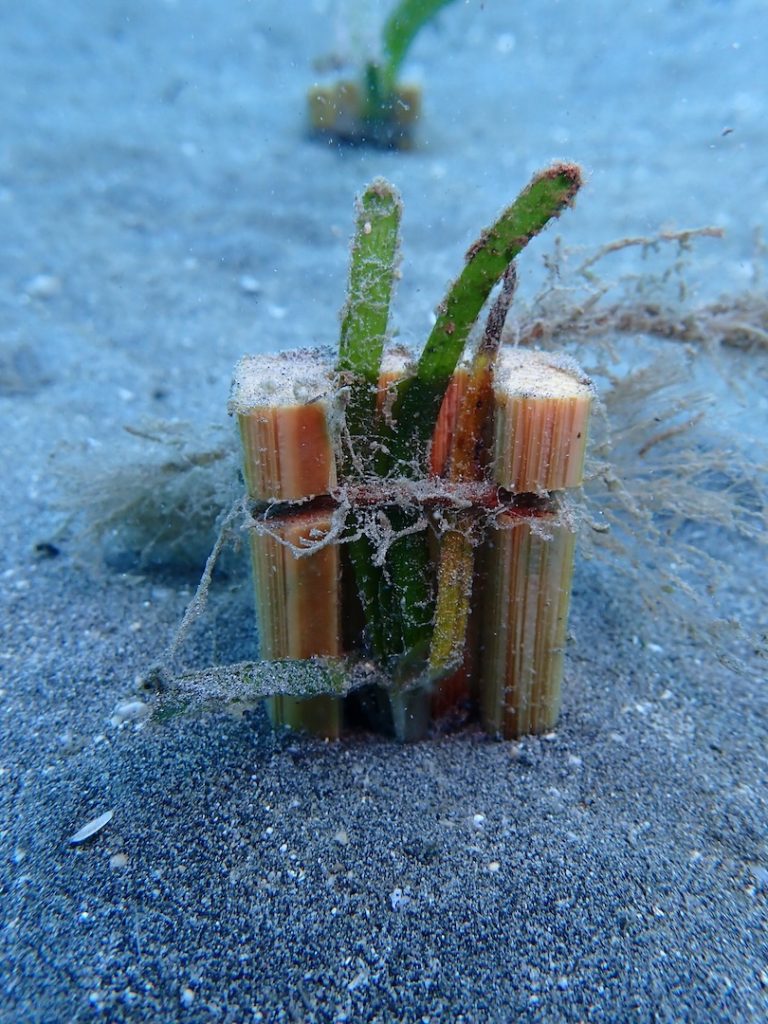
The team replicated the trials at Samuh Beach, this time with the assistance of two students from Udayana University. This location presented a different set of challenges, with a substrate of sand over rubble that made it difficult to anchor the stakes securely. A total of 100 seagrass seedlings were planted across four plots, two of which were exposed to tidal changes and two at a depth of 1-1.5 meters. Monitoring at this site is still underway.
Looking ahead, LINI will expand its efforts to Kahu-Kahu Village, Selayar, in a trial that will involve close collaboration with the local community. The planting will be near traditional fishing grounds, with the dual purpose of restoring the ecosystem and raising community awareness about the ecological importance of healthy seagrass beds. In this next phase, the team will plant not only Thalassia hemprichii but also Enhalus species, which are more abundant in the Selayar area.
The valuable data and insights gathered from these trials on location suitability, materials, and planting methods are all critical for the future development of the automated restoration system. LINI is confident that this study will not only pave the way for a more efficient and scalable approach to seagrass restoration but also inspire broader stakeholder involvement and collective responsibility for protecting Indonesia’s vital marine ecosystems.
By Ryannyka Dwi Astuti

